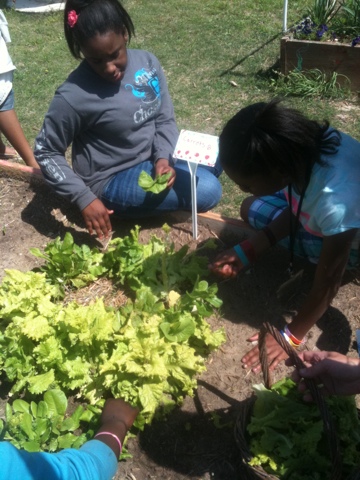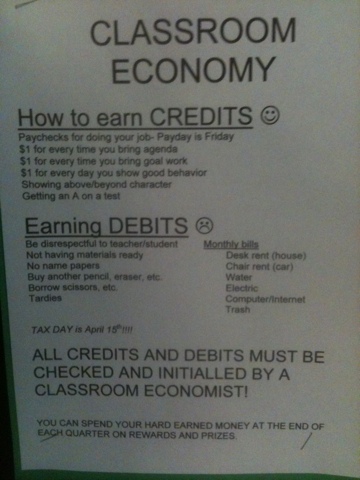Our class participates in a weekly program called Global Gardens: http://www.global-gardens.org/ In this program, students plan and work in their own garden. Students learn about science, nutrition, and a lot about peacefully cooperating as a team. Global Gardens is a non-profit organization here in town that works in schools during the day and also does after-school programs for students. My class loves our gardening teacher, Ms. Maggie. If your school cannot get involved in a program like this, I suggest you ask your supervisor for a spot outside and do it yourself! It is easy to build a raised bed and seeds are cheap. You could even apply for a grant or seek outside business partnerships (QuikTrip built our beds!)
The important thing to know is that the students are in charge of the garden in all aspects. They plan what to plant, what shapes to plant it in, how to make the signs, how to paint the bed, and what projects to take on. All ideas are accepted and celebrated. Students take ownership and responsibility for tending to their garden and this leads to wonderful things! Our garden is the Peace Garden and students have chosen plants that will grow peacefully together. In past years, my classes have selected plants from different cultures to show that the world can thrive even through our differences. Students become insightful and inquisitive in our garden. It has also become a favorite reading location and yoga spot. We've built birdhouses, sunclocks, and compost piles. We've built confidence and a whole lot of learning in our outdoor classroom!
The important thing to know is that the students are in charge of the garden in all aspects. They plan what to plant, what shapes to plant it in, how to make the signs, how to paint the bed, and what projects to take on. All ideas are accepted and celebrated. Students take ownership and responsibility for tending to their garden and this leads to wonderful things! Our garden is the Peace Garden and students have chosen plants that will grow peacefully together. In past years, my classes have selected plants from different cultures to show that the world can thrive even through our differences. Students become insightful and inquisitive in our garden. It has also become a favorite reading location and yoga spot. We've built birdhouses, sunclocks, and compost piles. We've built confidence and a whole lot of learning in our outdoor classroom!



























